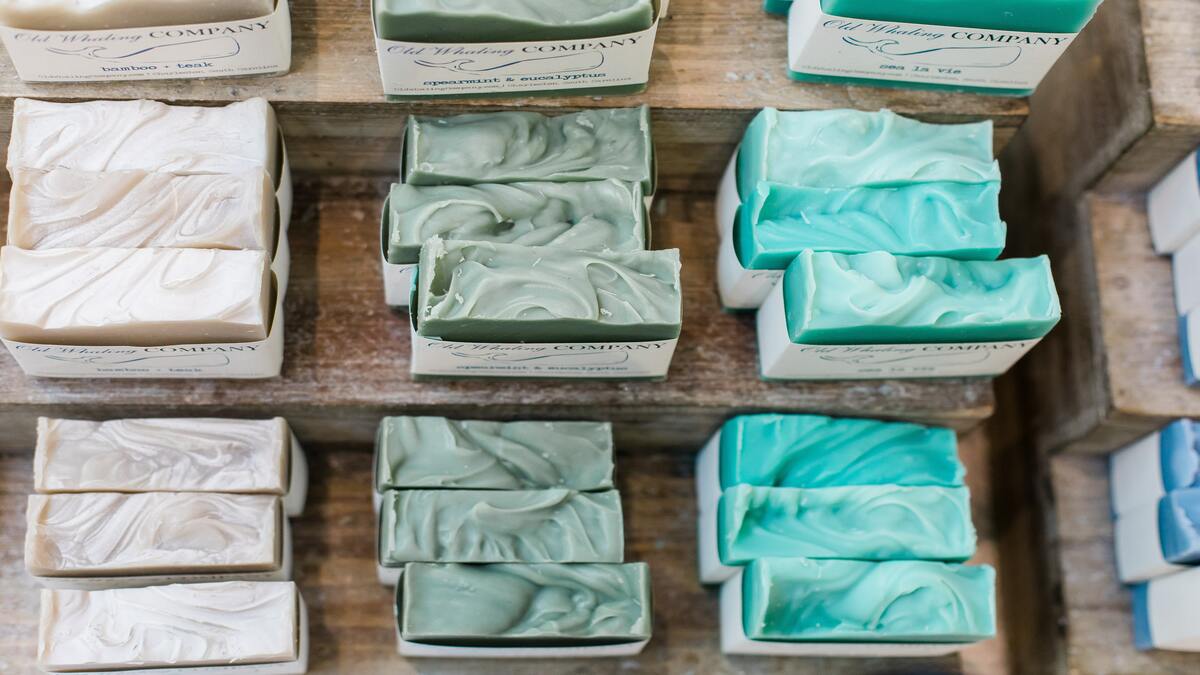What Can I Do With Soap Scraps?

If you frequently use soap bars or even shampoo bars, you know how annoying it is to end up with small soap scraps all over your home. Getting rid of these scraps usually feels like wasting resources and it’s normal to wonder if you can recycle or reuse them instead.
So to help you out, we have decided to use this post to explore all things soap scrap disposal – get ready to be blown away!
Can you recycle soap scraps?
While there aren’t any recycling facilities that accept soap scraps, you can easily recycle them at home.
How to properly recycle soap scraps?
You can recycle soap scraps to make a new bar in a variety of ways. These include:
Using a plastic bag and microwave
This is a quick method to create a new bar of soap from scraps. It is ideal for those in a hurry and who don’t care much about the shape of the final product. The method comprises the steps below:
- Place all your soap scraps in a plastic bag
- Microwave the bag of soap for a few minutes. Repeat this until the soap is soft
- Remove the bag of soap from the microwave and let it cool
- Mush the soap together to form a glob
- Place the glob in your freezer until it becomes hard
- Remove the glob from the paper bag and use it as you wish
Keep in mind though – the resulting glob of soap is far from perfect. It can fall apart at any time and is best for use in the sink in your garage or basement.
Using a microwave-safe dish
Soap bars made in this way are more consistent and presentable. To do this, follow the steps below:
- Grate your soap scraps and place the shaving in a microwave-safe dish
- Add some water to the dish and place it in the microwave. Aim to add one tablespoon of water for every cup of soap
- Microwave the dish for around 30 minutes and then remove it and stir the mixture. Repeat this process until you have a soft mushy mixture
- Add some essential oil if you want and mix it in
- Take out some muffin or bun trays and then spray them with some coconut oil
- Pour your soap mixture into the tray and wait for the soap to harden. The hardening process can take up to one week so you need to be patient
Using a saucepan and stovetop
If you’re looking to make soap of higher quality, using a saucepan and stovetop is a great way to go. The steps for this method are:
- Finely grate your soap scraps and place the resulting flakes in a saucepan
- Add water to the saucepan – one part water to two parts soap. You can let the mixture soak for a day
- Turn on your stovetop and set it to medium or low
- Place the saucepan on the stovetop and heat it for one or two hours. Ensure that you stir the mixture every five minutes though
- Once your mixture has the same consistency as mashed potato, remove it from the saucepan
- Place some grease or coconut oil in the molds of your choice – this prevents sticking
- Place your mixture into the molds and let it cool
Using pressure
Interestingly, you can also recycle scrap soaps without heat. This can be done by pressing your scrap soaps and water together using a wooden box and clamp. You can see how to do this in this Youtube video.
What else can I do with little bits of soap?
Apart from the recycling methods we have outlined above, you can also reuse soap in a variety of ways. These include:
1. Using them to exfoliate
You can do this by placing them in a mesh or exfoliating wash mitt and using it. If you’re looking for a softer feel, you can even place them in a face cloth instead.
2. Using them to freshen your clothes
You can use dry soap scraps to freshen clothes that you haven’t worn in a while. You can do this by simply putting one of these scraps in your drawer.
3. Using them to make liquid soap
If you blend a few soap scraps with water on the medium setting for around 30 seconds, you can make liquid soap that you can use to wash your hands.
Final thoughts
When it comes down to it, soap scraps can be recycled and reused in a variety of ways. So no matter how many of them are lying around your home, you shouldn’t worry. Just store them in an airtight container until you are ready to use them.
